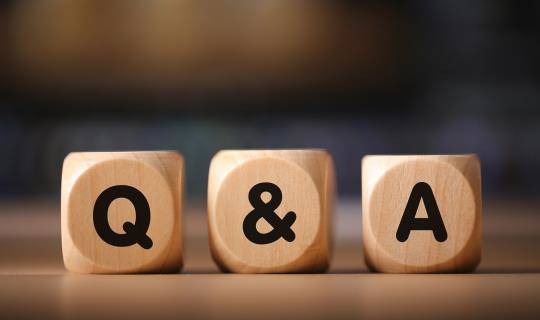Key insights: Looking ahead to a post-pandemic hybrid model for audits
By World Courier
Building on the lessons learned from the pandemic, creative solutions have been established to ensure we maintain a robust approach to auditing.
Virtual audits, which consist in conducting audits remotely, using electronic technology such as video conferencing, email and telephone to implement an objective and adequate evaluation, have started being included in Q&As from regulators and accreditation bodies to ensure business continuity.
But are those here to stay?
We conducted a webinar “Is the future of auditing hybrid?” to explore the agile future of auditing. Here are the key learnings from this session.

Looking back
In May 2020, a survey we carried out showed that nearly 70% of the participants hadn’t conducted a remote audit before COVID-19 and were much more likely to consider this option in the future1.
During our June 2021 live webinar, to the question “How many remote audits have you experienced between March 2020 and May 2021?”, 58% of the respondents selected “1-5” while 29% selected “More than 6” and almost 13% selected “None”.
The same poll conducted simultaneously on social media, showed that 30% of the respondents hadn’t experienced remote auditing.
For many, this new normal is still not a reality.
Looking back to March 2020, just before the pandemic was declared, remote auditing was known but hardly used. There was a lack of trust in its effectiveness. Justification was required to implement this unusual process, which wasn’t accepted by certain branches and regulations.
There was a clear preference for the most used method – the on-site audit. No regulation included the remote audits option. Article 46 of the Directive 2001/83/EC of the European Parliament and of the Council indicated that compliance with good manufacturing practice and good distribution practices had to be verified by the manufacturer “by conducting audits at the manufacturing and distribution sites of the manufacturer and distributors of active substances”2. It left no room for any other interpretation. Audits had to be performed on site.
Only later, in July 2016, the European Medicines Agency published a Q&A document that mentioned every mode of assessment for the first time3. But in most cases, organizations did not feel comfortable with remote options, also because the technology hadn’t advanced to the level it has today, and regulators did not accept this as a proper qualification method for a third-party vendor.
But the pandemic changed it all. When lockdowns started across the world, people began working from home. An early e-survey launched across the European Union by Eurofound Europa shows that in Summer 2020, 48% of the respondents classified as “employees” had worked at home at least some time during the COVID-19 pandemic, and of these over a third had worked exclusively from home4. Even though teleworking has since then been less prevalent, in Spring 2021 42% of the respondents were still working from home4.
Inevitably, more institutes, regulators and companies started developing more and accepting remote audits. Local and global guidelines got enriched to cover the method and provide guidance, even if limited. The technology used was improved and new technics were developed to secure the completion of the audits’ objectives. In a whitepaper published by DQS, one of the leading certification bodies for management systems worldwide, the results of a survey from December 2019 showed an acceptance rate by auditors to conduct a remote audit of 76%. In December 2020, 88% of respondents replied “Yes” to that same question5.
From the shift to remote audits, we believe certain creative solutions will help ensure we maintain a robust approach. There are some pros and cons to virtual solutions, but we became more flexible, using different methods to qualify vendors. It became essential to ensure proper preparation in advance, whether it means setting up a clear agenda and maintaining optimum communication between all parties, or providing the required documentation, recording facility tours and testing the technology before the meeting.

The future is hybrid and agile
Based on our experience, we believe remote audits could remain an integral part of our daily routine. They are, in many cases, a good replacement for on-site audits.
But the question remains as to whether they can fully replace those.
The situation, the organization and the environment are deciding factors. It is sometimes preferred to visit facilities in person. The more relevant the audited infrastructure is for the service provided, the more critical a visit will be.
But that doesn’t mean the whole process should be either wholly remote or fully on site.
Hybrid audits would allow the combination of both methods to optimize the audit process and ensure business continuity.
World Courier's 14 GxP compliant depots located in strategic and emerging markets all have the same quality management system. When conducting an audit of our whole network, carrying out on-site sessions in a few facilities only and virtual sessions of a few others, would still ensure a comprehensive assessment without the need to travel and repeat processes.
On-site audits may be indicated for the initial qualification of a new facility. But for the requalification process, a rotation including remote audits could be more adapted.
Another option could be to spread the audit over several days with only one day on site and one or two more days remotely. This could be especially relevant for internal audits.
While on-site audits ensure better visibility, less limitations and the possibility to check hard-copy documents in person, remote audits bring more flexibility, improve communication and preparation, allow to include the expertise of more stakeholders where needed and help optimize resources and sustainability, save on costs and time.
We believe remote audits will remain as a legitime method on defined occasions. Regulators and accreditation bodies may adjust their guidelines and may accept remote audits as part of hybrid audits. Organizations will learn to combine different methods and optimize the audit process depending on their needs. Their internal guidelines and SOPs will start embracing and including hybrid audits and proper auditor's training will be given. Technology will keep evolving to support this more agile approach and ensure audits’ objectives can be met.
Conclusion
Agile doesn’t not mean reduced. Being more agile means taking away unnecessary steps and keeping only the essential parts to ensure goals are met as quickly and efficiently as possible – a lean process. Audits’ objectives can be met in different ways while remaining compliant. Embracing a more streamlined and efficient way of carrying out audit processes will help organizations have clearer goals, fully recognize what is working for them and what isn’t and stay ahead of the game as they ensure business continuity even during unexpected times.
As we closed our webinar “Is the future of auditing hybrid?”, 94% of participants felt a hybrid audit could be a solution for their organization.
To read the audience's Top 8 Q&A click here.
1 Four key insights on carrying out a successful remote audit
2 Directive 2001/83/EC of the European Parliament and of the Council of 6 November 2001
3 Guidance on good manufacturing practice and good distribution practice: Questions and answers
4 Eurofound Europa: Living, working and COVID-19
5 DQS Survey Reveals: Companies are Open to Remote Audit




